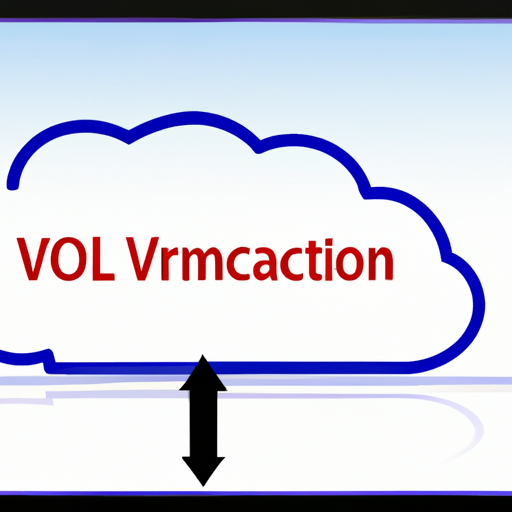-
Table of Contents
- Introduction
- Exploring the Benefits of Local vs. Cloud Virtualization
- How to Choose the Right Virtualization Platform for Your Business
- The Pros and Cons of Virtualization in the Cloud
- The Impact of Virtualization on Data Security
- The Future of Virtualization: What to Expect in the Coming Years
- Conclusion
“Unlock the Power of Virtualization – Local or Cloud, Your Choice!”
Introduction
Virtualization is a technology that allows users to create virtual versions of physical hardware, operating systems, and applications. It can be used to create a virtual environment on a local computer or in the cloud. Local virtualization allows users to create a virtual environment on their own computer, while cloud virtualization allows users to create a virtual environment in the cloud. Both types of virtualization offer advantages and disadvantages, and can be used to improve efficiency, reduce costs, and increase flexibility.
Exploring the Benefits of Local vs. Cloud Virtualization
Virtualization is a technology that has revolutionized the way businesses and individuals use computing resources. It allows users to create virtual machines, or VMs, that can be used to run multiple operating systems and applications on a single physical machine. This technology has enabled businesses to reduce costs and increase efficiency by consolidating their computing resources.
The two main types of virtualization are local and cloud. Local virtualization is the process of creating virtual machines on a single physical machine. This type of virtualization is ideal for businesses that need to run multiple applications on a single machine, such as a web server or database server. Local virtualization also allows businesses to save money by reducing the need for additional hardware.
Cloud virtualization, on the other hand, is the process of creating virtual machines on a remote server. This type of virtualization is ideal for businesses that need to scale quickly and easily. Cloud virtualization allows businesses to access computing resources on demand, without having to purchase additional hardware. It also allows businesses to access computing resources from anywhere in the world, making it ideal for businesses with multiple locations.
Both local and cloud virtualization offer a number of benefits. Local virtualization is ideal for businesses that need to run multiple applications on a single machine, as it allows them to save money by reducing the need for additional hardware. Cloud virtualization, on the other hand, is ideal for businesses that need to scale quickly and easily, as it allows them to access computing resources on demand, without having to purchase additional hardware.
In conclusion, both local and cloud virtualization offer a number of benefits. Businesses should consider their specific needs when deciding which type of virtualization is best for them. By understanding the benefits of each type of virtualization, businesses can make an informed decision that will help them maximize their computing resources and reduce costs.
How to Choose the Right Virtualization Platform for Your Business
Virtualization is an increasingly popular technology that can help businesses reduce costs, increase efficiency, and improve security. However, with so many virtualization platforms available, it can be difficult to determine which one is best for your business. To make the right choice, you need to consider your business’s specific needs and goals.
First, consider the size of your business. Small businesses may benefit from a cloud-based virtualization platform, while larger businesses may require an on-premise solution. Cloud-based solutions are typically more cost-effective and easier to manage, but they may not be able to handle the workload of a larger business.
Second, consider the type of applications you need to run. Different virtualization platforms are designed to run different types of applications. For example, some platforms are better suited for web applications, while others are better for database applications. Make sure the platform you choose is compatible with the applications you need to run.
Third, consider the level of security you need. Different virtualization platforms offer different levels of security. If you are dealing with sensitive data, you may need a platform that offers advanced security features.
Finally, consider the cost. Different virtualization platforms have different pricing models. Some are free, while others require a subscription fee. Make sure you understand the pricing structure before making a decision.
Choosing the right virtualization platform for your business can be a difficult decision. However, by considering your business’s size, application needs, security requirements, and cost, you can make an informed decision that will help your business succeed.
The Pros and Cons of Virtualization in the Cloud
Virtualization in the cloud is a technology that has become increasingly popular in recent years. It allows businesses to access computing resources on demand, without having to purchase and maintain their own hardware. This technology has many advantages, but also some drawbacks that should be considered before making the decision to use it.
The primary advantage of virtualization in the cloud is cost savings. By using cloud-based virtualization, businesses can avoid the costs associated with purchasing and maintaining their own hardware. This can be especially beneficial for small businesses that may not have the resources to invest in their own hardware. Additionally, virtualization in the cloud allows businesses to scale their computing resources up or down as needed, allowing them to pay only for the resources they need.
Another advantage of virtualization in the cloud is increased flexibility. By using cloud-based virtualization, businesses can access their computing resources from anywhere in the world. This can be especially beneficial for businesses that need to access their resources from multiple locations. Additionally, virtualization in the cloud allows businesses to quickly and easily deploy new applications and services without having to purchase and configure their own hardware.
However, there are some drawbacks to virtualization in the cloud that should be considered. One of the primary drawbacks is security. Since the cloud is a shared environment, businesses must be sure to properly secure their data and applications. Additionally, businesses must be aware of the potential for data breaches and other security threats.
Finally, virtualization in the cloud can be more expensive than traditional hardware solutions. While businesses may save money in the short term, they may end up paying more in the long run due to the cost of cloud-based services. Additionally, businesses may find that they are limited in the types of applications and services they can access due to the cloud provider’s restrictions.
Overall, virtualization in the cloud can be a great way for businesses to save money and increase their flexibility. However, businesses should carefully consider the potential drawbacks before making the decision to use it. By weighing the pros and cons, businesses can make an informed decision about whether virtualization in the cloud is the right choice for their needs.
The Impact of Virtualization on Data Security
Virtualization has become an increasingly popular technology in recent years, as it offers a number of advantages to businesses, such as cost savings, increased efficiency, and improved scalability. However, it is important to consider the impact of virtualization on data security.
Virtualization involves the use of virtual machines, which are software-based replicas of physical computers. These virtual machines can be used to run multiple operating systems and applications on a single physical machine. This can be beneficial for businesses, as it allows them to reduce their hardware costs and increase their computing power. However, it also presents a number of security risks.
One of the primary risks associated with virtualization is the potential for data leakage. Virtual machines are often used to store sensitive data, such as customer information or financial records. If the virtual machine is not properly secured, this data could be accessed by unauthorized users. Additionally, if the virtual machine is not properly configured, it could be vulnerable to malware or other malicious attacks.
Another risk associated with virtualization is the potential for data corruption. Virtual machines are often used to store large amounts of data, and if the data is not properly backed up, it could be lost or corrupted if the virtual machine fails. Additionally, if the virtual machine is not properly configured, it could be vulnerable to malicious attacks that could corrupt or delete the data stored on it.
Finally, virtualization can also increase the risk of data breaches. If the virtual machine is not properly secured, it could be vulnerable to hackers who could gain access to the data stored on it. Additionally, if the virtual machine is not properly configured, it could be vulnerable to malicious attacks that could allow hackers to gain access to the data stored on it.
In order to mitigate these risks, businesses should ensure that their virtual machines are properly secured and configured. Additionally, they should ensure that their data is properly backed up and that their virtual machines are regularly monitored for any suspicious activity. By taking these steps, businesses can ensure that their data is secure and protected from potential threats.
The Future of Virtualization: What to Expect in the Coming Years
The future of virtualization is an exciting prospect, as it promises to revolutionize the way we interact with technology. Virtualization is the process of creating a virtual version of a physical device or environment, such as a computer, server, or network. It allows users to access and manage multiple operating systems and applications on a single physical device.
In the coming years, virtualization is expected to become even more powerful and efficient. Advances in hardware and software technology will enable virtualization to become more accessible and easier to use. For example, cloud computing will allow users to access virtualized resources from anywhere in the world. This will make it easier for businesses to access and manage their data and applications.
In addition, virtualization will become more secure. Security measures such as encryption and authentication will be used to protect data and applications from unauthorized access. This will make it easier for businesses to protect their data and applications from malicious attacks.
Finally, virtualization will become more cost-effective. By using virtualization, businesses can reduce their hardware and software costs, as well as their energy consumption. This will make it easier for businesses to save money and reduce their environmental impact.
Overall, the future of virtualization looks bright. With advances in hardware and software technology, virtualization will become more accessible, secure, and cost-effective. This will make it easier for businesses to access and manage their data and applications, while also reducing their costs and environmental impact.
Conclusion
Local or cloud virtualization is a great way to increase efficiency and reduce costs for businesses. It allows businesses to access the same resources and applications without having to purchase and maintain physical hardware. It also provides a secure and reliable environment for businesses to store and access their data. With the right virtualization solution, businesses can benefit from increased scalability, improved performance, and cost savings.
